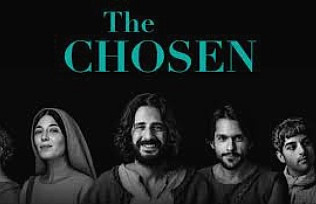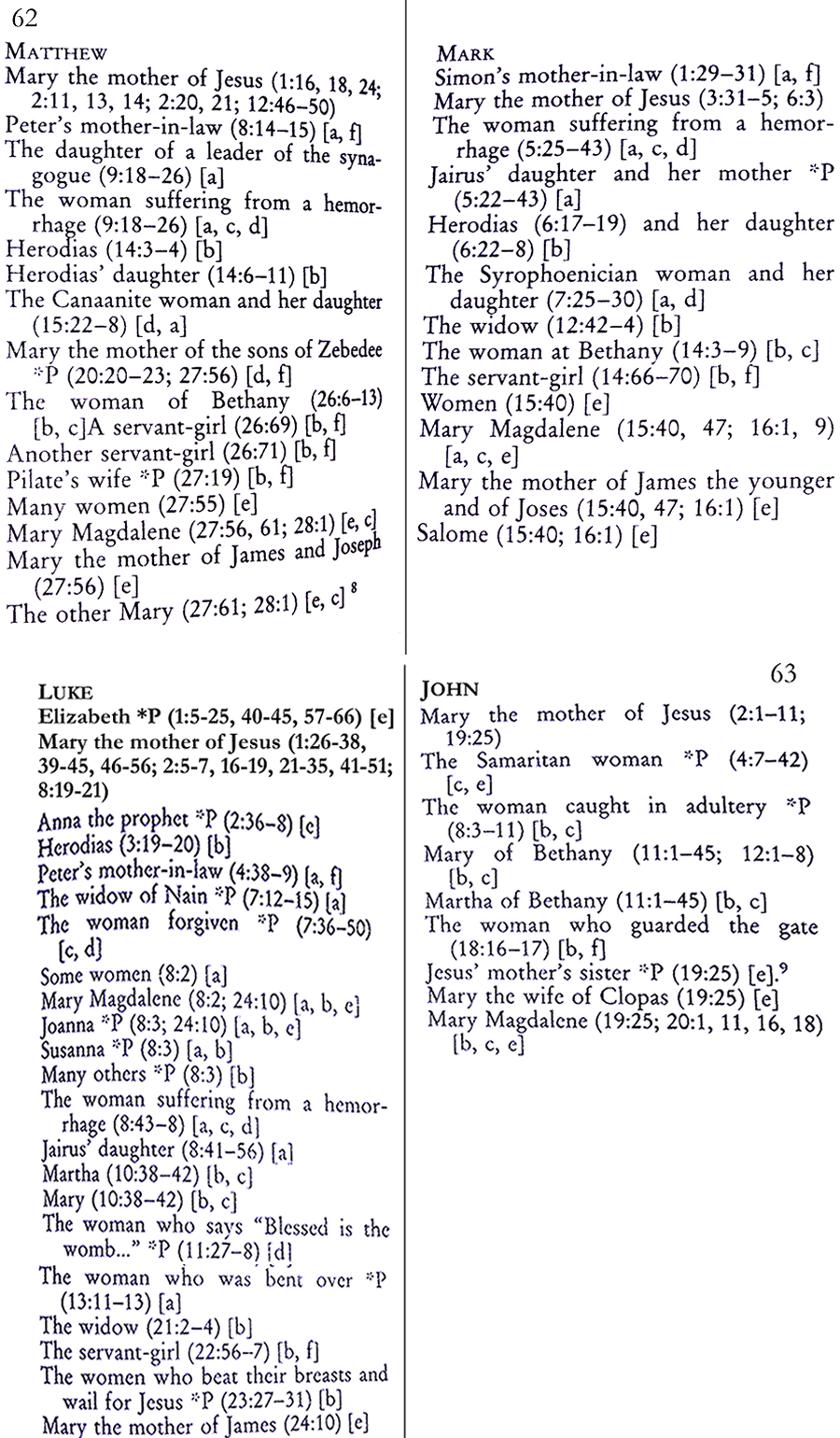Book Review
Mary Magdalene and Many Others: Women Who Followed Jesus
by Carl Ricci

For years I was sympathetic to the complementarian view of women in conservative Christian circles
(see my notes below in the blue box).
When I first tried to watch "The Chosen" I could not do it, thinking it was not biblical to have a single woman (Mary Magdalene) traveling with non-family members, especially men. By the way, complementarians typically are against The Chosen as well...for many reasons.

Around two years ago I engaged in a study of Luke's gospel and in my research I found Carla Ricci on Google Books. I read around 5-6 pages and knew I needed to get this book. This is Carla Ricci's PhD dissertation based on Luke 8:1-3. Go read this text - it is a text about the women who followed Jesus. Most of this review comes directly from my notes as I read through Ricci's book.
I recently read a feminist scholar who wrote that a man who advocates for women is a feminist. For some, this review is going to sound like I'm a feminist - I am not. What I am is a scholar who works hard to face evidence squarely...and to treat evidence with as much objectivity as possible.
THIS IS A GREAT BOOK. Not because it is written by a woman and not because this book focuses on the women around Jesus. This book is good because Carla Ricci is a good scholar who exegeted the texts quite well.
The reader should take a good look at the table Ricci presents in her section titled "Women and the Four Gospels," pp.61-64. See the table on pages 62-63 below. There chart shows every single encounter Jesus had with women.
Ricci points out that every time a small group of women around Jesus is mentioned the texts list three women and the first is always Mary Magdalene (pp.127-132). Ricci also points out that Mary (as the leader of the women) is a parallel to Peter and the list of three (Mary Magdalene + two others) parallels "Peter, James and John." (p.129)
As I read through Ricci I looked up at my bookshelf, wondering if Richard Bauckham cited Ricci in two different books ["Jesus and the Eyewitnesses" and "Gospel Women"]. Indeed he does! Bauckham gives Ricci some very nice praise. Both Ricci and Bauckham believe that Jesus included the women in the two-by-two evangelistic outreaches.
Ricci exegetes the Lucan account through the lens of Jesus' interaction with women (I am fairly certain this is covered in Ch 3, pp.51ff). At first this seemed artificial to me...until I read completely through her presentation. Ricci presents a pattern that does appear to have some consistency. The miracles/works of Jesus take on this pattern for "whom" the works are done: for a man > for a woman > for many.
Comparing the gospels, Ricci believes that Luke places emphasis on women around Jesus. She thinks the other gospel writers "filter them out [of the narrative] in an androcentric sense." (p.72) Ricci is not alone in her idea that Luke's gospel is more women-focused. Bauckham shares this opinion as well as Ben Witherington.
Following the pattern above, the first miracle recorded by Luke is the demon-possessed man (Lk 4:31ff), then He heals Simon's mother-in-law (Lk 4:38-39), followed by multiple healings (Lk 4:40-41).
Then in Luke 7 we have another another pattern of man > woman > many:
- the healing of the centurion servant
- raising of the widow's only son [likely the only financial help for the widow]
- the healing of "many" (7:21)
In conservative circles women are only allowed to teach women and children. Women cannot hold any leadership position. Women are to be submissive to their husbands as taught in Ephesians 5 (those who promote this view seem to ignore Eph 5:21 which clearly says that we are ALL to submit to one another).

Throughout Ricci's text the reader will learn small details about how women were treated in first century Judaism.
I mentioned "The Chosen" in my opening comments. "The Chosen" has Mary Magdalene converted prior to others. Ricci lays out evidence to support this: Jesus may have reached her very early in His Galilean ministry (p.138).
Reading Ricci helped me to see that Mary Magdalene is so well attested/named by her town AND that her town was so well known, all points to her being important in the primitive church. Add to this the prominent role Magdalene has in various Gnostic texts [which Ricci does bring into the discussion]...Mary Magdalene WAS an important player in the primitive church (even so, there is not a single mention of her in Paul or in Acts).
All three synoptic gospels names Mary Magdalene first in the passion listings.
p.138-9) Magdalene is named alone to see Jesus both in John's passion and in the ending of Mark: 16:1,9. (p.140)
This is an interesting quote Ricci pulls from Adriana Zarri speaking of how women usually "feel" more than men [who tend to "hide" their emotions].
Ricci introduces the quote: "As I find them so appropriate, I give here Zarri's words...p.258, referring to the woman in Luke 7:44-47 who wept on the feet of Jesus, wiping her tears with her hair.
Cited from E' piu facile che un cammello [Easier than a Camel], Zarri, Adriana (Turin 1975), p.258.
(The remainder are just MY thoughts written in my note taking on Ricci and her book):
It is difficult to grasp how Magdalene is not mentioned at the Ascension in Acts 1. The angel addresses them as "Men of Galilee" but this does not mean that no women were present, even though Luke typically WOULD mention the women. BUT...nobody was named in Acts 1 until the listing of the disciples to replace Judas.
[Acts 1:14] They all joined together constantly in prayer, along with the women and Mary the mother of Jesus, and with his brothers..."with the women" only naming the mother of Jesus!?!?
Ricci notes that there appears to be concentric circles around Jesus:
500 > 120 > 70 > 12 > 3
There appears to be the same circles with regard to the woman...with Magdalene as the lead woman [similar to Peter].
Every reader should slowly absorb pp.131-162. Ricci lays out the evidence of Magdalene being a significant player.
Ricci seems critical/disappointed that Paul fails to mention women in 1 Cor 15. I agree. (pp.144-45)
She fails to give the possible explanation that Paul did not hear/know about the women hearing/seeing the resurrection first.
(More of my thoughts) The gospels were written later...after Paul's letters. Perhaps this information was kept more in the Jerusalem Church. OR this info was intentionally hidden because it would have been embarrassing to the male disciples.
Ricci cites the "Gospel of Mary" where Peter and Mary Magdalene kind of get at each other...then Levi (Matthew) takes up for Mary. (p.147)
"Women are the recipients of the proclamation, and their lives should not be closed and suffocated in domestic roles: not because these are lacking in value, but because roles, all roles, should not be imprisoning structures, for women as well as for men, the full and free essence of their person should always come first." p.179
R.A. Baker
Ph.D. Ecclesiastical History

Questions, Comments or Criticisms:
You can send an email to directly to me Al Baker, CH101.
CH101 retains the right to edit and post comments/questions unless you specifically ask that your comments NOT be posted. Comments that are personal or private are never posted...only questions about Church History, the Bible, etc.